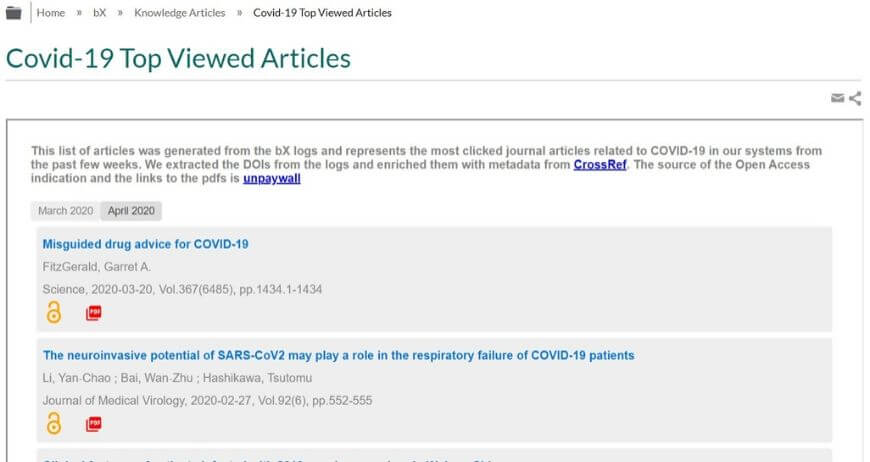In one of my recent bX talks, I presented the idea that bX represents a new component of the OpenURL framework. I would like to explain this a bit further.
bX relates to the OpenURL framework in a number of ways:
1. The bX repository is an aggregate of OpenURL-based usage data.
In bX, we collect usage data from multiple OpenURL link resolvers (starting with SFX). As each of these link resolver reflects activities of users in multiple information systems/environments, in effect, bX creates a “supper aggregation” of aggregated usage data.
2. Usage data transported to the bX is encoded in an OpenURL context-object format.
bX harvests (using OAI-PMH) usage data which is encoded as ContextObjects (based on the OpenURL standard). It was important for us to ensure that usage-data that feeds into bX will be designed in a way that will enable maximum participation and interoperability, hence bX’s use of the OpenURL and the OAI-PMH standards. This means that many other information resources and link servers (other than SFX) could relatively easily participate in the bX framework.
3. The bX query protocol uses the OpenURL standard.
Any client application can send an OpenURL request to bX in order to receive a list of recommendations. The ContextObject describes the article for which recommendations are requested. bX can respond in a range of XML formats (including RSS and ATOM feeds). Since the bX reflects usage patterns of multiple scholarly information environments, the articles recommended by bX will include articles from other content systems, not just the one from which the bX recommendation request was received.
Why is this important?
As we know all too well, the scholarly information space is highly distributed, with resources scattered across multiple databases, journals, article repositories, etc. – most of them vendor-controlled.
The OpenURL framework, and more specifically link resolvers such as SFX, address this issue by offering interoperability across disparate information sources. OpenURL enables the information-seeking user to traverse a universe of resources scattered across multiple platforms, systems, and vendors – in a manner that is completely agnostic to any proprietary constraints.
In effect, bX, just like SFX, presents relations between scholarly items that transcend the boundaries of their business provision. bX and SFX can both be considered as ‘overlay’ services.


